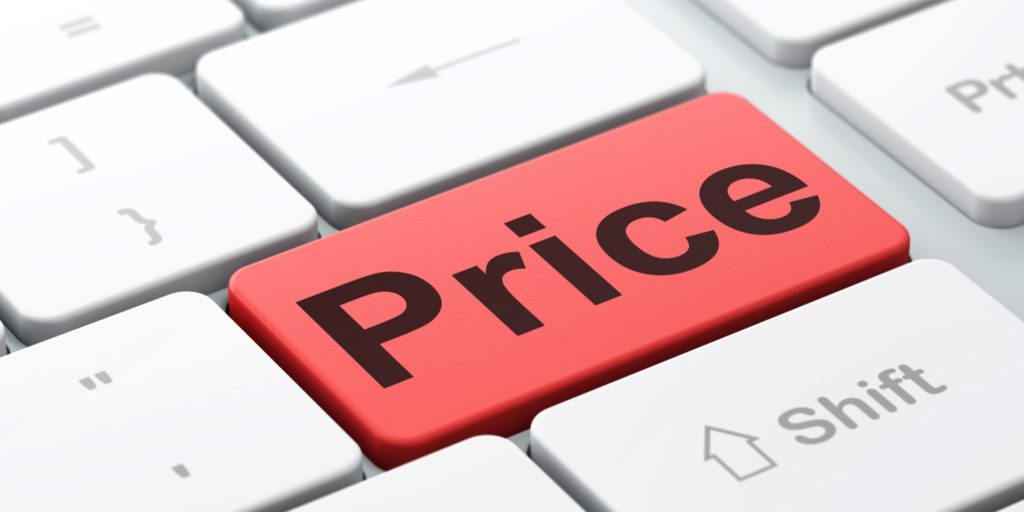10 Secrets to Consider When Pricing Your Products – Part 2

Did you know that oftentimes the difference between a winning product and a losing product is how you price it? Yep, pricing is THAT important.
In this part 2 article in my pricing series, we’ll explore important secrets to consider when:
- Determining your pricing objectives
- Presenting and marketing your prices
If you didn’t catch part 1, you can read it here: “Are You Making These 5 Pricing Mistakes in Your Marketing?”
Before we get into presenting and marketing your prices, let’s talk about objectives.
What Is Your Pricing Objective?
Before you set your prices, it’s always wise to determine what your objective is—your true objective. And it’s not to just make the most money:)
Here are five secret objectives and related strategies to consider in your pricing:
1. Price low for market penetration: This is what I like to call the foot-in-the-door tactic. The first dollar is always the toughest to get from a customer, so you price very, very low to get as many customers as possible. This is a good strategy if you want to upsell a higher priced item as a follow-up to the initial sale, or you can slowly start to increase the price over time. But the goal is to get lots of customers to simply TRY your product first.
2. Price high for maximum profits: This strategy seeks to get as many sales as quickly as possible. In particular, this may work well when you have a product that’s unique and you have little competition, but have a short window of time until knockoffs start entering the market.
3. Price low to undercut competition: Walmart comes to mind here. Their prices are so low, they knock other mom and pop shops out of the market. This strategy may work well if your product(s) are considered commodities and you have very few competitors.
4. Price fairly in the marketplace to be competitive: This is used if you want to be seen as fair and reasonable and want consideration for proposals or bids. This works well if you’re looking to develop long-term, trusting relationships with customers and have limited differentiators.
5. Price for maximum profit and maximum sales: Think Starbucks, Lamborghini, The Ritz-Carlton, Tiffany & Co, Rolex, or Apple. When you have clear differentiators, stellar marketing, industry-leading quality, and want to position yourself as top of the line (with exclusive customers), you’re able to charge any price you want, quite frankly.
5 Ways to Present Your Price for Maximum Results
Now that we’ve taken a look at just a few pricing objectives, let’s review five ways to present your price for maximum results.
Price Presentation Strategy #1: The Other Way is More Expensive
We’ve all seen this tactic at play. It’s when you make a direct comparison to an alternate offering and make your solution seem like a no-brainer.
For example:
“You’d need a full year of counseling to get the same results you’ll find in this wellness program.”
What you’re doing here is making a direct comparison that the other way is much more expensive.
Another example:
“For what you’d pay your contractor to do that work, I’d get it done at half the cost and in half the time.”
Price Presentation Strategy #2: The Installment Plan
They work like a charm. Simply put, typically, in a consumer’s mind, a smaller amount over time is a better deal, even if in the long run they pay more.
For example:
“Pay $599 now or make 3 easy, monthly payments of $215.”
If we do the math, when the customer opts for the installment plan, they’re actually paying $46 more. This may seem small to a customer (if they even notice), but to a seller, if you get 100 customers to opt for the installment plan, that’s $4,600 extra in your pocket.
With this tactic you can always advertise the monthly installment price. This gives the perception of a low price. We all care about cash flow, even consumers. A lower monthly payment will typically always win out over a hefty up-front price.
Price Presentation Strategy #3: A Value of…Method
This one we see all the time, particularly in infomercials, and there’s a reason for it.
For example:
If you’re selling an online course:
- “You’ll get lifetime access to your course” (A $1500 value)
- “15% off the entire library of other courses” (A $500 value)
- “A personal, one-on-one consultation” (A $2500 value)
You’ll get $4500 worth of value for only $499.
This simply adds up each component of the offer, places a value on it, sums the total, and compares it to the asking price. Simple but very effective.
Price Presentation Strategy #4: The Cost of Inaction
This strategy helps the audience decide what the loss is of NOT taking an action.
For example:
Let’s say you’re selling a two-year degree program. Your pricing positioning could go something like this:
“If you’re looking for a way to make more money, have a successful career, and be able to take care of your family, our two-year degree program is for you. Our program is offered at $7500.
When you compare this cost to the additional money you could make with the education you’ll receive, you’ll find the expense to be well worth it.”
This strategy gives the customer a chance to understand what they are losing by not taking action.
Price Presentation Strategy #5: The Direct Comparison
This method is relatively straightforward and directly compares your price to others.
For example:
• “At most upscale salons, you’ll pay $299”
• “At some popular salons, you may pay $125”
• “But at our salon, you’ll only pay $39”
This positioning puts an obvious spotlight on your lower prices.
Bonus Tip Trio
Speaking of pricing, here are a few rules of thumb for pricing your products:
- If your price is less than $10, use endings such as $.99 rather than $.95. Typically the customer’s reaction is the same for both price points and you get four more cents.
- If your price is between $10 and $100, end your price in $.95 rather than $.99. Customers may see the $.99 as being greedy.
- If your price is over $100, it’s better to list the price in whole dollars rather than cents. This gives a cleaner look.
The Bottom Line
Who knew so much strategy went into setting prices!! And these are just some of the many ways you can create and position your prices.
Always remember, price is a perception of value and it’s just as important a marketing decision as the colors in your brand. Be thoughtful about these 10 secrets to consider when pricing your products.
You May Also Like
- Are You Making these 5 Pricing Mistakes in Your Marketing? Click here.
- 10 Important Ways You Should Analyze Your Business to Gain Marketing Strategy Insights. Click here.







